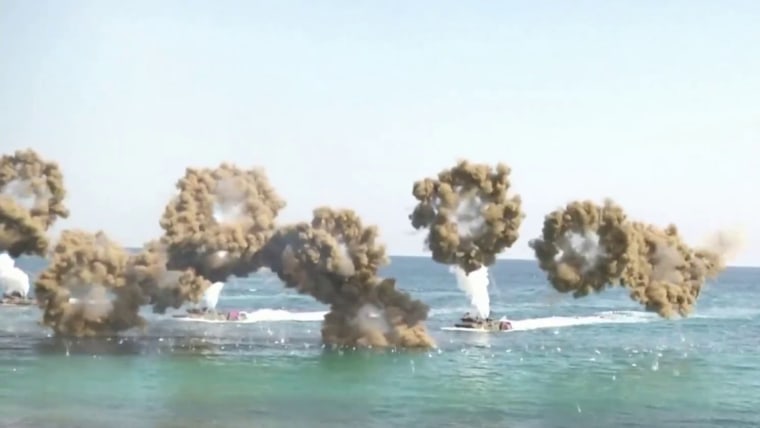[ad_1]
SEOUL, South Korea — North Korea test-launched an intercontinental ballistic missile in a display of military might Thursday just hours before the leaders of South Korea and Japan were to meet at a Tokyo summit expected to be overshadowed by North Korean nuclear threats.
The launch, the North’s first ICBM test in a month and third weapons testing this week, also comes as South Korean and U.S. troops continue joint military exercises that Pyongyang considers a rehearsal to invade.
South Korea’s military said the North Korean ICBM flew toward the Korean Peninsula’s eastern waters after being launched from North Korea’s capital, Pyongyang, around 7:10 a.m. (6:10 p.m. Wednesday ET). The statement said the ICBM launched on a steep angle and flew about 620 miles before landing in the waters between the Korean Peninsula and Japan.
It was not immediately known which ICBM was launched, but North Korea’s long-range missiles are designed mainly to strike the U.S. Previous launches have shown North Korea’s weapons have the range to reach all of the U.S. mainland, but some foreign experts still doubt the North has mastered the technologies to build warheads small enough to be placed on those missiles and protect the warheads during atmospheric reentry.
Before heading to Tokyo for a summit with Japanese Prime Minister Fumio Kishida, South Korean President Yoon Suk Yeol said, “North Korea’s reckless provocations will pay the clear price.”
During an emergency security meeting on the North Korean launch, Yoon instructed the South Korean military to thoroughly proceed with its ongoing exercises with U.S. forces, conduct some of the planned joint drills in an intensive manner and strengthen Seoul-Washington-Tokyo security cooperation, according to Yoon’s office.
South Korea’s Joint Chiefs of Staff said in a statement that it will maintain firm readiness based on the military ability to “overwhelmingly” respond to any provocation by North Korea.
In Tokyo, Kishida said: “We must further strengthen cooperation among the allies and like-minded countries.” He declined to comment on North Korea’s possible intentions behind the launch.
Japanese Defense Minister Yasukazu Hamada said the missile most likely landed in the waters outside Japan’s exclusive economic zone after about an hour-long flight.
The North’s ongoing aggressive run of weapons tests has been widely expected; leader Kim Jong Un last week ordered his military to be ready to repel what he called “frantic war preparations moves” by his country’s rivals, referring to large ongoing drills between the U.S. and South Korea.
North Korea has long argued that U.S.-South Korean military drills are proof of their hostile policies against North Korea, though Washington and Seoul say they have no intention of invading the North. Many experts say North Korea uses its rivals’ drills as a pretext to increase its nuclear capability to pressure the United States to make concessions like the relaxing of international sanctions.
After conducting a record number of missile tests last year, North Korea has extended its testing activities this year, including the Feb. 18 launch of its Hwasong-15 ICBM. After that ICBM launch, North Korea said the test was meant to further bolster its “fatal” nuclear attack capacity against its rivals.
Pyongyang also this week fired cruise missiles from a submarine and sent short-range ballistic missiles across its territory into its eastern sea. Last week, North Korea also fired at least six short-range ballistic missiles from a western coastal area in an exercise supervised by Kim, an event state media described as a simulated attack on an unspecified South Korean airfield.
The ongoing U.S.-South Korean drills that began Monday and are scheduled to continue until March 23 include computer simulations and live-fire field exercises.
[ad_2]
Source link

